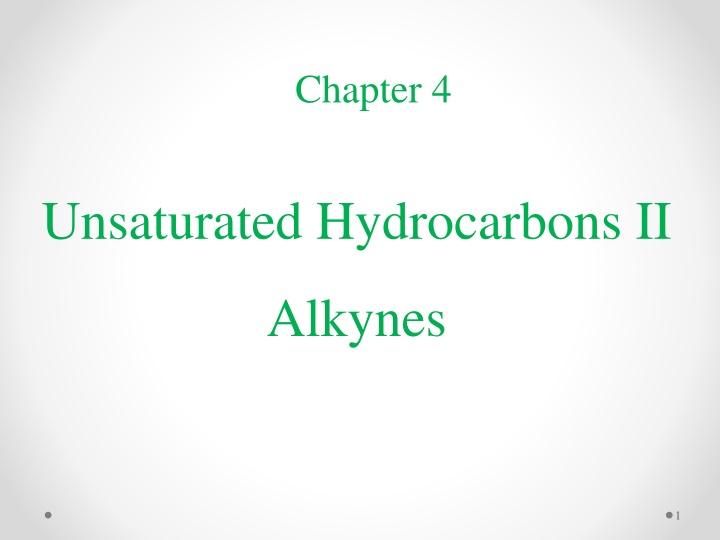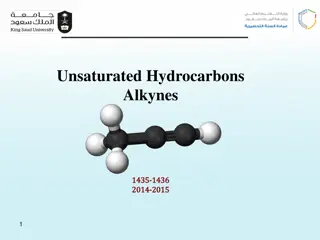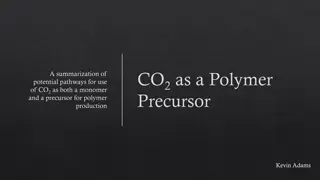
Alkynes: Properties, Preparation, and Reactions
Explore the world of alkynes, including their properties, preparation methods, and various reactions. Learn about common examples, nomenclature, and physical properties of alkynes. Discover how alkynes can be prepared industrially, through dehydrohalogenation, and alkylation processes. Dive into the reactions of alkynes, including hydrogenation, halogenation, and hydrohalogenation. Enhance your understanding of alkynes with detailed information and examples.
Uploaded on | 0 Views
Download Presentation

Please find below an Image/Link to download the presentation.
The content on the website is provided AS IS for your information and personal use only. It may not be sold, licensed, or shared on other websites without obtaining consent from the author. If you encounter any issues during the download, it is possible that the publisher has removed the file from their server.
You are allowed to download the files provided on this website for personal or commercial use, subject to the condition that they are used lawfully. All files are the property of their respective owners.
The content on the website is provided AS IS for your information and personal use only. It may not be sold, licensed, or shared on other websites without obtaining consent from the author.
E N D
Presentation Transcript
Chapter 4 Unsaturated Hydrocarbons II Alkynes 1
Alkynes CnH2n-2 Crabon-Carbon Trible bond Nomenclature of Alkynes Common Names: Named as substituted Isobutylisopropylacetylene IUPAC Names: ane yne 2
Examples: 1,3-Hexadiyne 2,5-dimethyl-3-heptyne 4-Methyl-1-hexen-5-yne 5-Methyl-4-hexen-1-yne The two-carbon alkyl group derived from acetylene is called an ethynyl group. C C H Ethynylcyclohexane 3
Physical Properties C1-C4gases C5-C18liquid More than C18 soilds Alkynes are nonpolar compounds. Thus alkynes are soluble in the nonpolar solvents such as carbon tetrachloride (CCl4) and benzene (C6H6), but they are insoluble in polar solvents such as water. Acidity of Terminal Alkynes A hydrogen atom on a triply bonded carbon is weakly acidic and can be removed by a very strong base. Sodium amide, for example, converts acetylenes to acetylides. 4
Preparation of Alkynes 1) Industrial From Calcium carbide 5
2- Dehydrohalogenation of Alkyl Dihalide Examples: 6
3-Alkylation of Acetylene and Terminal Acetylene By attaching alkyl groups to acetylene, more complex alkynes can be prepared. By treating the sodium alkynide with a primary alkyl halide. Examples: 7
Reactions of Alkynes 1-Addition of Hydrogen: Hydrogenation 8
Hydrogenation of an alkyne to an alkene can be accomplished through the use of special catalysts or reagents. Moreover, these special methods allow the preparation of either (E)- or (Z)-alkenes from disubstituted alkynes. Examples: 9
2-Addition of Halogen: Halogenation 3-Addition of Hydrogen Halide: Hydrohalogenation Markovnikov addition 10
4-Addition of Water : Hydration Addition of water to alkynes requires not only an acid catalyst but mercuric ion as well. Markovnikov addition 11
5- Ozonolysis of alkynes Example: 12




